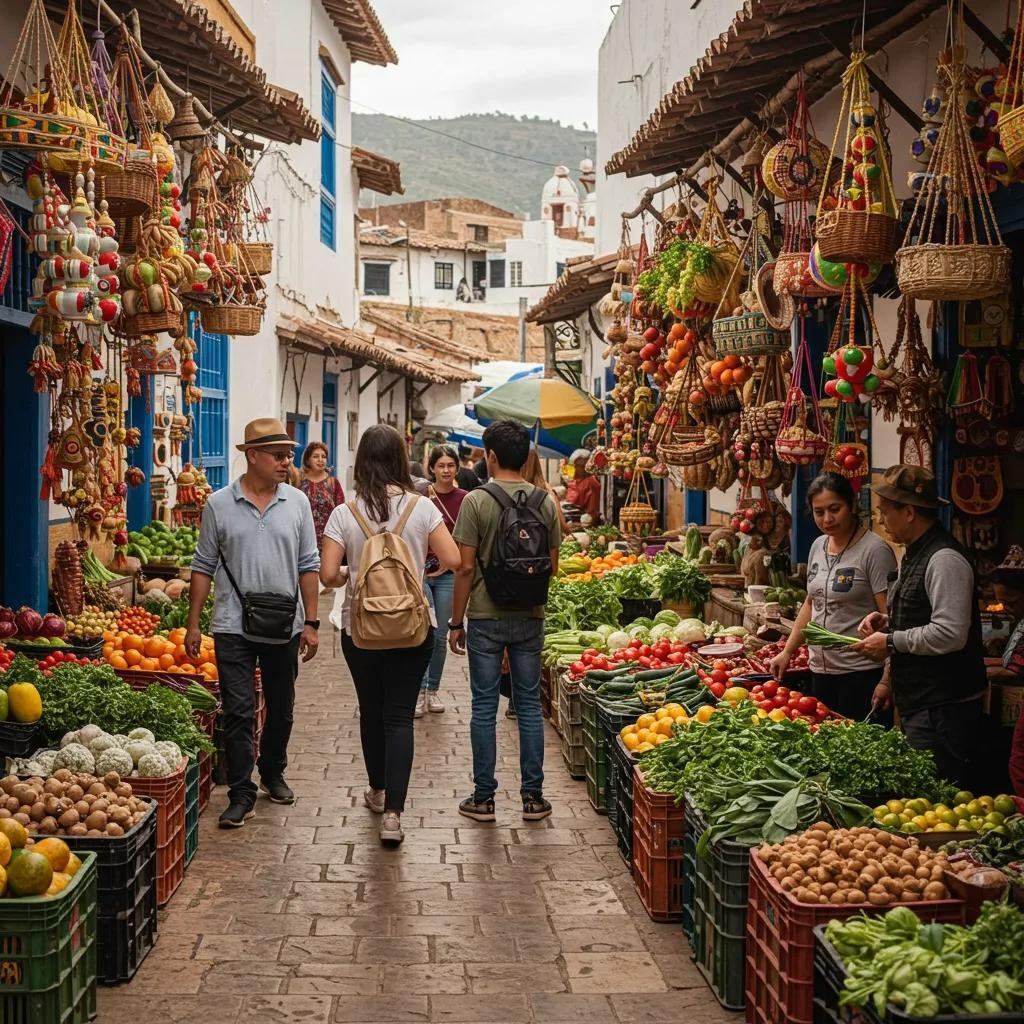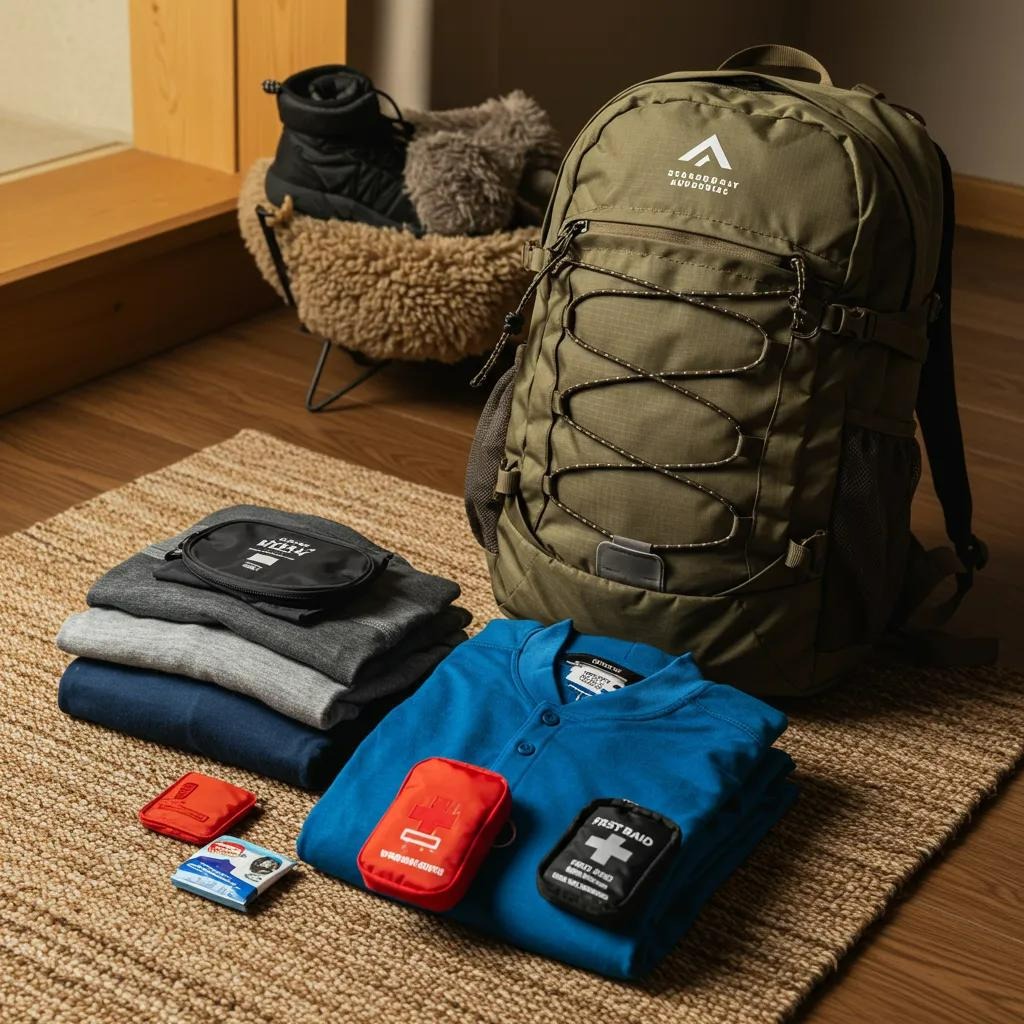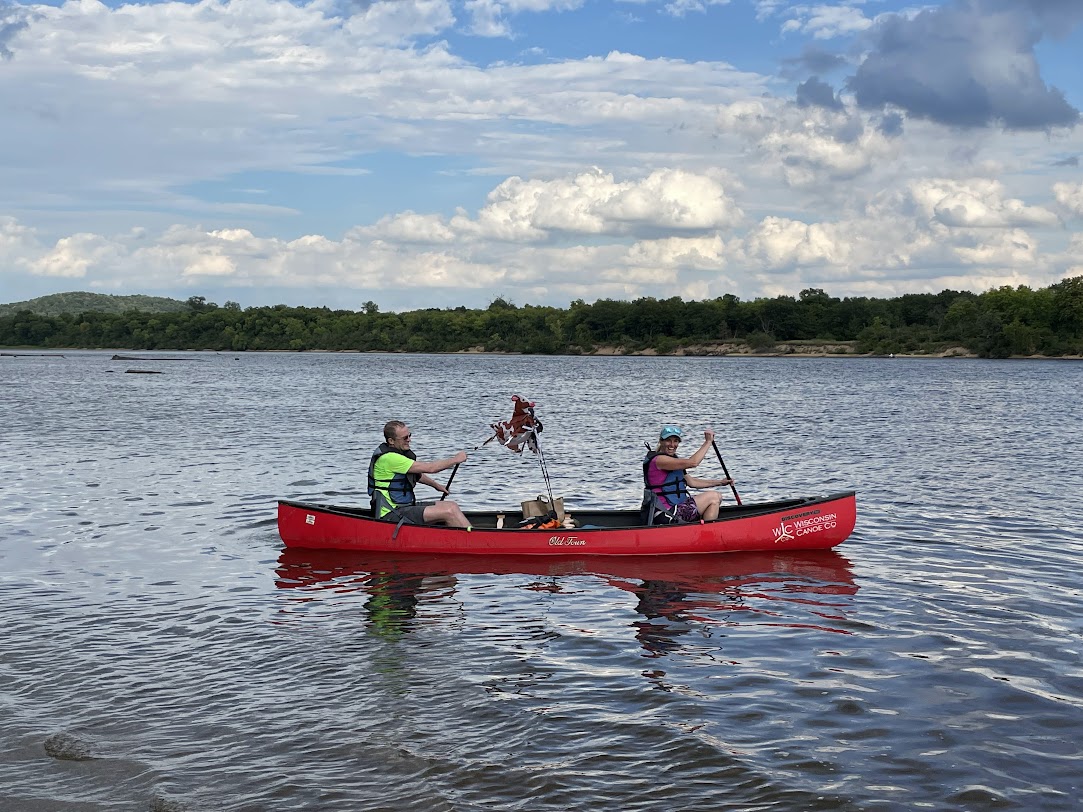Unscripted Travel Guides: How to Discover Authentic Adventure Experiences
Unscripted travel is a style of adventure travel that prioritizes spontaneity, local immersion, and flexible routing to turn trips into memorable stories rather than tightly scheduled checklists. This guide explains what unscripted travel looks like, why it produces deeper cultural immersion, and how to prepare practically for off-the-beaten-path adventures.
Many travelers want authenticity but worry about safety, logistics, and gear; this article offers a practical philosophy plus actionable steps so readers can plan unscripted journeys with confidence.
You will find concise definitions, destination recommendations for genuine cultural exchange, preparation checklists and gear comparisons, and a look at community-driven support models that balance freedom with "safe-ish" structure.
Throughout, the piece integrates examples from Lost Travel as concrete illustrations of unscripted itineraries, community resources, and guide types to help you move from inspiration to planning.
What Is Unscripted Travel and Why Choose Authentic Adventure Travel?
Unscripted travel is a travel approach that deliberately reduces rigid itineraries so travelers can follow serendipity, local leads, and emerging opportunities; this openness produces deeper cultural contact and memorable, personalized experiences. The mechanism is simple: by prioritizing flexible routing and local connections, unscripted travel increases encounters that transform perspective, build resilience, and generate authentic stories.
Choosing authentic adventure travel matters because these experiences favor skill-building, genuine human exchange, and adaptable problem-solving over passive sightseeing. This leads naturally to understanding how unscripted moments produce transformative outcomes, which we explore next.
Unscripted travel yields three core benefits worth considering:
- Enhanced cultural immersion: flexible plans make time for local invitations and homestays.
- Personal growth: navigating uncertainty strengthens confidence and situational problem-solving.
- Unique stories: serendipitous encounters create memories unavailable on packaged tours.

How Does Unscripted Travel Create Unique and Transformative Experiences?
Unscripted travel creates transformative experiences through improvisation and intensified local contact that together produce new perspectives and durable memories. Serendipity operates as a mechanism: unplanned detours lead to unexpected interactions with hosts, artisans, or local events that alter a traveler's narrative and values.
Challenge and problem-solving—navigating rough roads, language gaps, or shifting weather—encourage resourcefulness and social bonding among travel companions. These change moments often catalyze long-term personal growth, and understanding how to foster them begins with cultivating curiosity and a willingness to adapt, which we outline in preparation tips below.
What Makes Authentic Adventure Travel Different from Traditional Trips?
Authentic adventure travel differs from traditional trips in planning style, relationship depth, and risk profile: it emphasizes local integration over fixed schedules and tourist infrastructure. Where packaged tours optimize predictability through reserved hotels and timed pickups, authentic trips trade some convenience for real-time decision-making and deeper contact with culture.
Ethical engagement with hosts and sustainable practices become central, since unscripted travel often touches less-touristed places where impact matters. This contrast points toward both greater reward and the need for intentional preparation, particularly regarding safety and respectful local interaction.
Which Off The Beaten Path Adventures Offer the Most Genuine Cultural Immersion?
Off-the-beaten-path adventures that consistently produce cultural immersion combine slow travel, local hosts, and activity-based connection—activities like shared meals, multi-day treks with community guides, and participatory festivals. The reason these formats work is they create repeated, meaningful contact rather than single impressions; multi-day rhythms let trust form and context emerge. Evaluating a destination for immersion should focus on local accessibility, prevalence of community-led experiences, and the presence of traditions that welcome outsider participation. Below are destination examples with why they enable immersion.
Top destinations and why they work:
- Vietnam (rural regions): daily markets, family-run homestays, and shared food culture open conversation.
- Japan (regional towns): craft workshops and local festivals allow hands-on cultural exchange.
- Wales (backcountry): bikepacking routes through villages connect riders with local pubs and repair communities.
These examples connect directly to adventure formats like bikepacking and moto rallies that facilitate repeated local contact and deeper cultural engagement.
When comparing destinations for immersion and practical activities, consider these examples:
- Vietnam (rural): Offers dense market culture and hospitable homestays, making it ideal for motorbike rallies, market meals, and homestays.
- Japan (regional): Known for strong craft traditions and local festivals, providing opportunities for workshop visits, temple stays, and island fishing trips.
- Wales (backcountry): Features small communities along routes that encourage interaction, perfect for bikepacking nights in village inns and pub conversations.
What Are the Best Destinations for Immersive Cultural Trips?
Best immersive destinations combine accessible local hosts, opportunities for shared labor or practice, and limited tourist saturation so interactions are genuine rather than commodified. Rural Vietnam invites visitors into everyday life through markets and family meals, while regional Japan offers participatory craft and food experiences that reward curiosity. The Welsh backcountry and similar temperate regions provide activity-driven immersion—bikepacking routes stop in small communities where conversational exchange is natural and sustained. Choosing a destination means weighing language factors, seasonal rhythms, and local hosting norms to ensure respectful and meaningful engagement.
How Do Local Connections Enhance Off-the-Grid Travel Experiences?
Local connections—guides, homestays, and community organizers—function as cultural translators who turn raw encounters into meaningful exchanges by providing context, introductions, and safety knowledge. Practically, build these connections through respectful inquiry, transparent intent (explain you want to learn), and reciprocity such as purchasing local goods or hiring guides. Hosts benefit when travelers engage ethically, and communities gain sustainable income from authentic visits rather than surface-level tourism. Understanding how to form these bonds prepares travelers to move beyond observation into mutual exchange.
For a quick reference on destinations for cultural immersion and suggested activities to enable genuine connections, consider these options:
- Nicaragua: Immersive due to community rituals and cooperative projects, with local engagement examples like village visits and craft cooperatives.
- Vietnam: Offers household market culture, with local engagement through family meals and motorbike routes.
- Japan: Features regional festivals and crafts, providing opportunities for workshop stays and homestays.
How Can You Prepare for an Unscripted Adventure Travel Experience?

Preparing for unscripted travel requires mindset work, layered logistics, and adaptable gear so travelers can respond to unfolding opportunities without being caught off-guard. The core mechanism is redundancy: backups in communication, power, and safety give freedom to diverge from plans. Begin by creating a flexible itinerary skeleton, sharing check-ins with a trusted contact, and packing multi-use gear. The next sections provide concrete packing and safety steps to translate this philosophy into practice.
Preparation checklist (actionable steps):
- Build a flexible itinerary with key anchor points and open days.
- Share your plan and check-in cadence with someone at home.
- Carry layered clothing and multi-use equipment for varied conditions.
When prioritizing packing decisions for unscripted journeys, consider these core gear items:
- Bikepacking bag: Best for multi-day bike routes, these bags are lightweight, waterproof, and modular.
- Compact first-aid kit: Essential for all trips, prioritize blister and wound care.
- Portable power bank: Crucial for remote areas, with solar-capable options preferred.
What Essential Gear Should You Pack for Flexible and Spontaneous Journeys?
Pack light but versatile: choose multi-use clothing, a reliable first-aid kit, a robust power solution, and modular storage that adapts to bike or moto use. Electronics should include durable charging options and offline maps; documentation requires both digital and photocopy backups. Prioritizing items that serve multiple functions reduces load while increasing adaptability, and thinking in layers helps you handle sudden weather or activity changes.
What Safety Tips Are Crucial for Off-the-Beaten-Path Adventures?
Safety for unscripted travel centers on preparation, situational awareness, and contingency planning: research regional hazards, purchase appropriate insurance, and set clear check-in points. Practice conservative decision-making around unfamiliar transport and terrain, and learn basic local emergency numbers and cultural norms that affect safety. These measures preserve freedom to explore while reducing preventable risks.
Key safety list:
- Carry emergency contact info and share your rough route.
- Use local guides for complex terrain or language barriers.
- Maintain health precautions (vaccination, meds) appropriate to region.
These tips create a "safe-ish" framework that enables exploratory freedom while managing risk.
Small Lost Travel picks/resources: For practical planning and community-sourced checklists, explore Lost Travel's trip examples—such as bikepacking Wales, moto rallies like Lost in Vietnam, and regional experiences like Lost in Japan—which demonstrate applied packing strategies and route planning. Their community hub offers peer advice and event notices that can supplement your personal checklist and reduce guesswork.
How Does Lost Travel’s Community Foster Authentic and Safe-ish Adventure Travel?
Lost Travel's community model—often referenced as the Lost Travel Collective—combines peer-led knowledge sharing, on-the-ground event coordination, and a supportive network that balances spontaneity with practical safeguards. The mechanism is community intelligence: shared route notes, repair tips, and localized safety insights reduce friction for adventurous, unscripted travel.
As an information hub and lead-generation platform, Lost Travel showcases trip formats like moto rallies and bikepacking editions that exemplify this balance between freedom and structure. Community resources amplify individual readiness and create a safety net through collective experience.
Community benefits include:
- Shared route and gear knowledge that shortens the learning curve for newcomers.
- Peer support during events that enhances safety and troubleshooting.
- A network that connects curious travelers to local resources and leaders.
What Stories and Testimonials Highlight the Lost Travel Experience?
Rather than inventing individual testimonials, observe that community-sourced reports commonly emphasize transformative moments, practical problem-solving, and repeat participation as indicators of collective value. Travelers note that peer-shared route notes and group troubleshooting reduce the perceived risk of exploring untrodden places, and recurring events suggest a persistent network of engaged members. These patterns function as social proof without relying on fabricated quotes and indicate how communal feedback loops improve both safety and depth of experience.
How Can You Join or Host Your Own Unscripted Adventure with Lost Travel?
Getting involved typically follows a simple sequence: familiarize yourself with trip formats and community guidelines, participate in open events or forums to build rapport, and consider hosting a small trip that adheres to community safety norms. Host responsibilities usually include route-sharing, contingency planning, and fostering respectful local engagement. For next steps, explore Lost Travel's experiences hub and the Lost Travel Collective to find current events, community resources, and hosting guidance that align with your interests.

What Are the Top Unique Travel Guides for Exploring Untrodden Destinations?
Specialized guides for untrodden travel types—bikepacking, moto travel, paddle adventures—focus on route notes, gear lists, local contacts, and emergency contingencies to support unscripted decisions. The mechanism by which these guides help is specificity: targeted route insights and culture notes shorten discovery time and reduce risk, enabling travelers to remain flexible while making informed choices. Below is a comparison of common guide types and what each typically covers.
To help match guide types to traveler needs, consider their coverage focus and best-use cases:
- Bikepacking guides: Cover routes, resupply points, and gradient notes, making them best for long-distance cycling and backcountry lodging.
- Moto travel guides: Focus on road quality, repair shops, and fuel stops, ideal for multi-day rallies and overland loops.
- Paddle guides: Provide put-in/take-out locations and tide/weather notes, best for river and coastal exploration.
How Do Specialized Guides Support Bikepacking, Moto Travel, and Other Adventure Types?
Specialized guides provide route annotations, resupply windows, local contact suggestions, and emergency exit options tailored to each discipline; these elements convert raw freedom into manageable choices. For example, a moto travel guide lists repair shops and fuel availability while a bikepacking guide flags stealth-camp opportunities and water sources. Using activity-specific guides reduces cognitive load while preserving flexibility, letting you respond to serendipity without sacrificing safety.
Where Can You Find Resources for Planning Immersive and Flexible Travel Itineraries?
Effective planning draws on maps, community forums, activity-specific guidebooks, and local leaders who can validate route conditions; combining these sources creates a layered information set that supports unscripted choices. Use offline map packs, community-shared route notes, and published guides to triangulate reliable data, and prioritize sources that include local cultural notes for ethical engagement. When planning, weigh official guidance against community experience to construct an itinerary skeleton that leaves room for authentic detours.
- Offline mapping tools and route packs for navigation.
- Community hubs and forums for real-time route updates.
- Local guide contacts and printed guidebooks for cultural context.
Frequently Asked Questions
What are the key principles of unscripted travel?
The key principles of unscripted travel include flexibility, local immersion, and spontaneity. Travelers are encouraged to abandon rigid itineraries in favor of open-ended exploration, allowing for serendipitous encounters and authentic experiences. This approach emphasizes building relationships with local communities, engaging in cultural practices, and adapting to changing circumstances. By prioritizing these principles, travelers can create unique narratives and foster personal growth through unexpected challenges and interactions.
How can I ensure safety while traveling unscripted?
Ensuring safety during unscripted travel involves thorough preparation and situational awareness. Research your destination for potential hazards, understand local customs, and have emergency contacts readily available. It's also wise to share your travel plans with someone at home and establish regular check-in points.
Utilizing local guides can enhance safety, as they provide valuable insights into the area and help navigate language barriers. By combining these strategies, you can explore freely while minimizing risks.
What types of activities promote cultural immersion during travel?
Activities that promote cultural immersion include participating in local festivals, engaging in community workshops, and sharing meals with local families. These experiences allow travelers to connect deeply with the culture and people of a destination.
Multi-day treks with local guides or volunteering in community projects also foster meaningful interactions. The key is to seek out opportunities that encourage repeated contact and genuine exchange, rather than superficial tourist experiences.
How can I find local hosts or guides for my unscripted journey?
Finding local hosts or guides can be achieved through community platforms, travel forums, and social media groups focused on unscripted travel. Websites like Couchsurfing or Airbnb Experiences often feature local hosts eager to share their culture.
Additionally, reaching out to local tourism boards or community organizations can provide valuable contacts. Building relationships through respectful inquiry and expressing a genuine interest in learning can also lead to meaningful connections with locals.
What should I include in my packing list for unscripted travel?
Your packing list for unscripted travel should prioritize versatility and adaptability. Include multi-use clothing, a compact first-aid kit, and a reliable power source, such as a portable charger. Layered clothing is essential for varying weather conditions, and consider packing lightweight, modular gear that can be easily adjusted for different activities. Don't forget offline maps and essential documents, ensuring you have both digital and physical copies for backup.
How can I balance spontaneity with planning in my travel itinerary?
Balancing spontaneity with planning involves creating a flexible itinerary that includes key anchor points while leaving room for unexpected opportunities. Start with a rough outline of your trip, identifying must-see locations or events, but allow for open days where you can explore freely.
Regularly check in with local resources or fellow travelers for recommendations, and be prepared to adjust your plans based on new information or experiences that arise during your journey.
What role does community play in unscripted travel experiences?
Community plays a vital role in unscripted travel by providing support, shared knowledge, and local insights that enhance the travel experience. Engaging with local communities can lead to authentic interactions and deeper cultural understanding.
Additionally, community-driven platforms often offer resources like route suggestions, safety tips, and event coordination, which help travelers navigate unfamiliar environments. This collective intelligence fosters a sense of belonging and encourages responsible travel practices.


